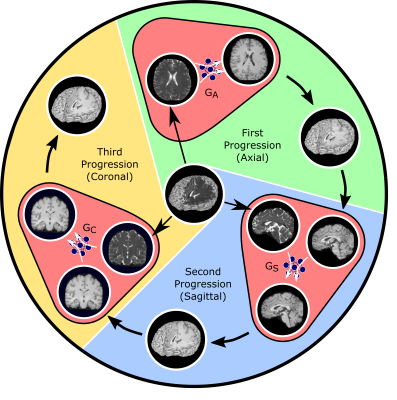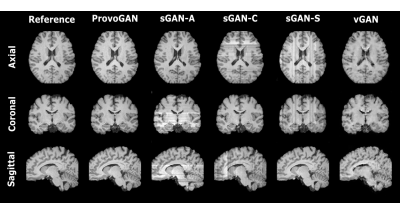Mahmut Yurt1,2, Muzaffer Ozbey1,2, Salman Ul Hassan Dar1,2, Berk Tinaz1,2,3, Kader Karlı Oğuz2,4, and Tolga Çukur1,2,5
1Department of Electrical and Electronics Engineering, Bilkent University, Ankara, Turkey, 2National Magnetic Resonance Research Center, Bilkent University, Ankara, Turkey, 3Department of Electrical and Computer Engineering, University of Southern California, Los Angeles, CA, United States, 4Department of Radiology, Hacettepe University, Ankara, Turkey, 5Neuroscience Program, Aysel Sabuncu Brain Research Center, Bilkent University, Ankara, Turkey
1Department of Electrical and Electronics Engineering, Bilkent University, Ankara, Turkey, 2National Magnetic Resonance Research Center, Bilkent University, Ankara, Turkey, 3Department of Electrical and Computer Engineering, University of Southern California, Los Angeles, CA, United States, 4Department of Radiology, Hacettepe University, Ankara, Turkey, 5Neuroscience Program, Aysel Sabuncu Brain Research Center, Bilkent University, Ankara, Turkey
We propose a progressively volumetrized generative model for efficient context learning in 3D multi-contrast MRI accelerated across contrast sets or k-space coefficients. The proposed method decomposes volumetric recovery tasks into a sequence of less complex cross-sectional subtasks.

Fig. 1: ProvoGAN performs a series of cross-sectional subtasks optimally-ordered across individual rectilinear orientations (Axial$$$\rightarrow$$$Sagittal$$$\rightarrow$$$Coronal illustrated here) to handle the aimed volumetric recovery task. Within a given subtask, source-contrast volume is divided into cross-sections across the longitudinal dimension, and a cross-sectional mapping is learned to recover target cross-sections from source cross-sections, where the previous subtask's (if available) output is further incorporated to leverage contextual priors.

Fig. 2: ProvoGAN is demonstrated on IXI for T1-weighted image synthesis. Representative results from ProvoGAN, sGAN models (sGAN-A is trained axially, sGAN-C coronally, and sGAN-S sagittally), and vGAN are displayed for all rectilinear orientations (first row: axial, second row: coronal, third row: sagittal) together with reference images.